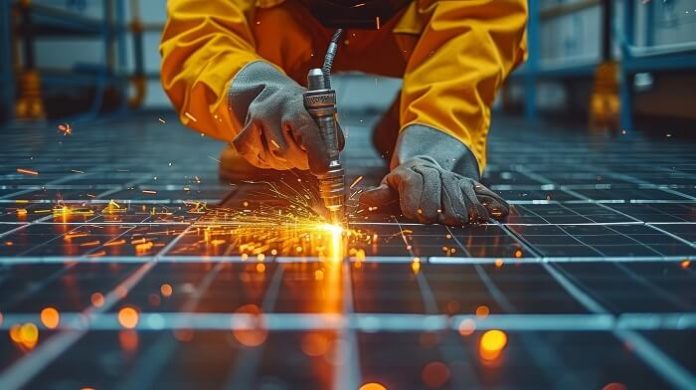India’s solar equipment manufacturing sector is gearing up for substantial growth in the next two to three years.
According to a report by CareEdge Ratings, the industry is expected to witness a capital expenditure of nearly ₹1 lakh crore, signalling a period of major expansion.
Debt Funding and Investments
The expansion is anticipated to attract around ₹70,000 crore in debt funding, which will be allocated toward investments in polysilicon and wafer manufacturing capacities.
The surge in investments highlights the sector’s potential for rapid development, with CareEdge Ratings emphasizing the importance of these investments in its latest assessment.
Growing Renewable Energy Capacity
As of September 2024, the renewable energy capacity has reached 155 Gigawatt (GW), with solar power leading the charge at 91 GW.
The growth follows remarkable capacity additions over the last seven to eight years, driven by favorable policy initiatives, competitive tariffs, and strong investor interest.
Future Projections for Solar Capacity
Looking ahead, CareEdge Ratings projects that annual renewable energy installations will exceed 35 GW in the next two years, fuelled by a robust project pipeline exceeding 100 GW.
In 2023-24, India installed 18.5 GW of renewable energy capacity, underscoring the country’s momentum in the renewable energy sector.
Government Initiatives and Protective Measures
The government has introduced protective measures to support domestic manufacturers, including imposing a basic customs duty of 25% on cells and 40% on modules imported from China since April 2022.
The policies aim to shield domestic producers from competitive pricing pressures, enhancing their market standing.
Rooftop Solar and Hybrid Systems to Drive Growth
In addition to large-scale solar installations, projections indicate that rooftop solar, hybrid components, and off-grid solar systems will contribute around 20 GW of new capacity over the next few years.
This will further boost India’s renewable energy capabilities, supporting the nation’s long-term growth objectives.
Challenges to Overcome
Despite strong demand and supportive policies, the sector faces several challenges.
These include insufficient integrated solar equipment capacity, reliance on Chinese supply chains, growing competition, and potential delays in renewable energy capacity additions due to systemic issues.
Alignment with India’s Climate Goals
The expansion of solar capacity is integral to India’s broader environmental commitments made at COP26 in 2021.
The country aims to achieve 500 GW of non-fossil electricity capacity and generate half of its energy from renewables by 2030.
Additionally, India has pledged to reduce emissions by one billion tons and decrease the emissions intensity of its GDP by 45% by 2030, with a long-term goal of achieving net-zero emissions by 2070.
A Global Effort Toward Climate Change Mitigation
The push for renewable energy expansion is not only a domestic priority but also aligns with global climate change mitigation efforts.
As reported by knnindia.co.in, by reducing its reliance on fossil fuels, India is contributing to the global transition toward a more sustainable and environmentally friendly energy system.
































